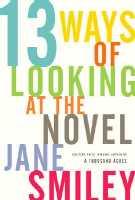Umberto Eco, The Mysterious Flame of Queen Loana: An Illustrated Novel
 Eco takes such evident pleasure in the creative process that it’s hard not to be caught up in his excitement and to marvel at the ease and lightness of his prose (or at least that of the translation from the Italian, by Geoffrey Brock). You can almost hear Eco chuckling as he sets to work establishing his premise, one that other novelists can only admire with jealousy because it’s the kind that can be done just once: What if a sixty-year-old man awoke from a coma a partial amnesiac, his sole memories those of the popular culture—the novels, comic books, movies, and popular songs—he has consumed since he was a child?
Eco takes such evident pleasure in the creative process that it’s hard not to be caught up in his excitement and to marvel at the ease and lightness of his prose (or at least that of the translation from the Italian, by Geoffrey Brock). You can almost hear Eco chuckling as he sets to work establishing his premise, one that other novelists can only admire with jealousy because it’s the kind that can be done just once: What if a sixty-year-old man awoke from a coma a partial amnesiac, his sole memories those of the popular culture—the novels, comic books, movies, and popular songs—he has consumed since he was a child?In the central section of the book, the narrator Giambattista Bodoni (nicknamed Yambo), an antiquarian book dealer, returns to his childhood home to sift through the pop-culture artifacts he has saved there since the end of World War II, to see if these can reawaken the rest of his memories. And as we follow Yambo on his quest, the book itself allows us to participate in it by means of numerous color reproductions of the material Yambo revisits. Italian translations of Mickey Mouse comics, illustrations from boys’ adventure novels, stills from Hollywood movies, Fascist propaganda posters, front pages of Partisan newspapers—all these and more are presented and described in loving detail, weaving above Yambo’s personal story another, larger story that we all share regardless of when or where we were raised. With one jarring exception, the illustrations cast a spell over the reader just as much as they do over Yambo, enchanting us into feeling the urgency of his quest. (The exception: A reproduction labeled as a promotional poster for the film Road to Zanzibar is clearly an image of the U.S. DVD case.) For almost all of us—and this is the great secret at the heart of Eco’s endeavor—what we read, watch, and hear of the great world around us is no less significant in shaping our selves than are the unique experiences we undergo as members of individual families and towns.
Towards the end of the novel, Yambo regains his personal memory by unexplained, almost supernatural means; the most likely scenario is that, shocked into unconsciousness again after discovering a first folio of Shakespeare among his childhood artifacts (something so rare that Yambo immediately recognizes he can sell it for "a gazillion lira"), his mind is free once more to roam unhindered among the events of his childhood. This gives Eco the opportunity to tell us two extended stories about Yambo’s teenage years: his role in engineering the escape of a band of Russian prisoners from the hands of the Black Brigades, and his unrequited crush on a high-school classmate. The first of these stories is gripping, but the second is much less so, despite its being accompanied by phantasmagoric montages created from bits and pieces of the earlier pictorial artifacts. Worse, Eco ends the novel at the climax of this second story without ever allowing Yambo to return to his wife and children or his bookstore. (Has Yambo died? Eco leaves the question unanswered.) Still, the pleasures of the rest of the novel more than make up for the frustrations of its final chapter. The Mysterious Flame of Queen Loana is the most sheer fun I’ve had reading a book in quite a while.
Technorati Tags: Books, Fiction, Umberto Eco







0 Comments:
Post a Comment
<< Home